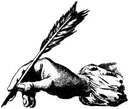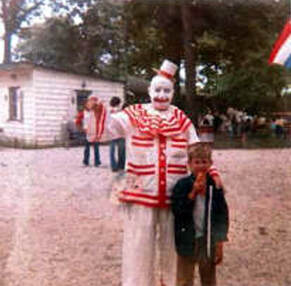 By M.P. Pellicer | Stranger Than Fiction Stories If eyes are windows to the soul, then what are paintings produced by a human? What if that human is a killer? 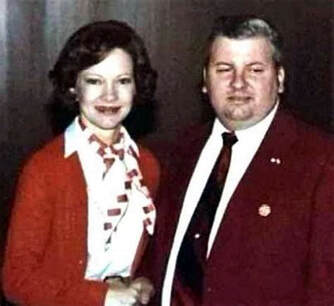 Gacy with First Lady Rosalynn Carter, photo taken May 6, 1978, seven months later he would be arrested for murder. Gacy with First Lady Rosalynn Carter, photo taken May 6, 1978, seven months later he would be arrested for murder. Many murderers have turned to producing art during the time they are incarcerated. Mostly the art is bad, and only the notoriety of their names brings it any attention. In some instances whether knowingly or subconsciously they give a glimpse into what feeds their souls. John Wayne Gacy Gacy was arrested in 1978. By then he had sodomized and murdered 33 young men and boys, all between the ages of 14 and 21. Five of his victims are still unidentified. He became a master of leading a double life. When he was 18 he became involved in politics and worked for a local Democratic Party candidate. He held numerous jobs, and in the meantime he joined the local Jaycees. He married in 1964, and worked for his father-in-law who owned several Kentucky Fried Chicken restaurants. Even though he was married, he engaged in homosexual encounters. By 1967, he had two children, and was named vice-president of the Waterloo Jaycees (Iowa). 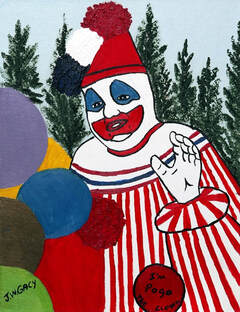 Painting by Gacy as himself in the alter-ego of Pogo the Clown Painting by Gacy as himself in the alter-ego of Pogo the Clown In August of that year he sexually assaulted the 15-year-old son of a fellow Jaycee and local politician. As a result of the arrest, he was diagnosed with antisocial personality disorder, with indicators he was likely to come into conflict with society. In 1968, he was convicted of sodomy and sentenced to 10 years. His wife divorced him, and she was granted sole custody of his two children, along with their home, property and alimony. He never saw her or his children again. He served only 18 months of his sentence when he was granted parole. He married his second wife in 1972. She had two daughters from a previous marriage. Three years later he told her he was bisexual, and then one day he told her this would be the last time they had intercourse. She observed her husband bring young men to the garage. She found gay pornography as well. They divorced in 1976. During these years he dressed up as either Pogo the Clown or Patches the Clown, and he would perform at fundraising events, parades and visiting hospitalized children, which was ironic because he was killing boys and young men at the same time. He continued in his work with Democratic Party politics. 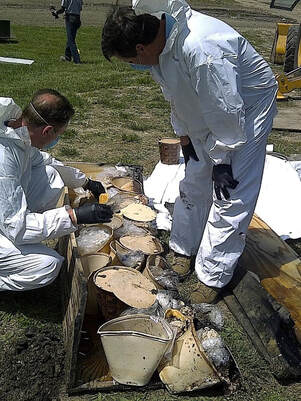 Buckets full of jaw bones and teeth of Gacy's victims is sifted through. (Source - Cook County Sheriff's Office) Buckets full of jaw bones and teeth of Gacy's victims is sifted through. (Source - Cook County Sheriff's Office) Gacy was caught when investigators were tipped off that Gacy had offered a job to Robert Piest, 15, who had gone missing. Police found he had a criminal record that involved sodomy, and a search warrant was granted for his property. Authorities found 26 bodies in the crawl space of his house, three were buried somewhere on the property, and four were thrown into the Des Plaines River. He typically garroted his victims to death with a hammer handle. Some victims convulsed for an "hour or two" before dying. He was accused of killing 33 young men but he told investigators that the body count was as high as 45. A retired police officer said he had reason to believe there might be victims buried in the grounds of an apartment building on West Miami Avenue in Chicago, where Gacy was a caretaker for several years. After his arrest, Gacy named some of his employees as participating in the murders. He pointed a finger at Philip Paske who was a close associate of John Norm, who during the 1970s operated a nationwide sex trafficking ring based in Chicago known as The Delta Project. There was speculation Gacy was tied to this trafficking ring as well. After his arrest in 1978, the jury took less than 2 hours to find him guilty and sentence him to death. His execution was set for 1980, but he would spend 14 years on death row. This is when he began to paint. He was executed by lethal injection on May 10, 1994, and his last words were "kiss my ass." The same year of his execution, his attorney auctioned off his artwork. Some of it was purchased and 25 were destroyed in a bonfire attended by 300 people, including some family members of Gacy's victims. His brain was removed and is in the possession of Helen Morrison a witness for the defense at Gacy's trial who had interviewed him, and other serial killers in a study of common personality traits of violent sociopaths. His body was cremated. 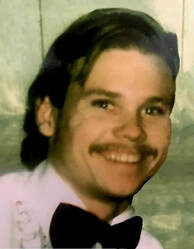 Francis Alexander a Gacy victim was identified in 2021 with the use of DNA Francis Alexander a Gacy victim was identified in 2021 with the use of DNA Gacy's pathology has been connected to an abusive relationship with his alcoholic father. He was molested when he was 5, by a neighborhood girl who was 15 years old. When he was 8 he was molested by a contractor working on a building next to his house. In 2021, Cook County identified another Gacy victim through the use of DNA. His name was Francis Wayne Alexander, and he moved to Chicago in 1975. His marriage ended in a divorce a few months later. His family lost touch with him, but had no idea he was Victim No. 5 found under Gacy's house in 1978. DNA taken from a molar was connected to a family member in 2020, and after 40-some years they found out what had become of him. They never suspected this was his fate, since during those years Alexander had cut off communication with them because he wanted to be left alone. His family was from Long Island, and he is interred in Oakridge-Glen Oak Cemetery in Cook County, Illinois. 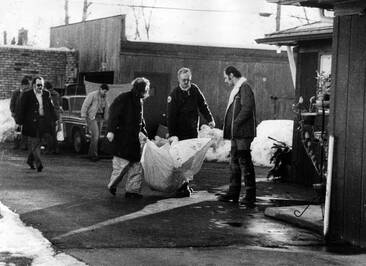 Human remains being removed by police c.1978 Human remains being removed by police c.1978 Gacy's artwork was first exhibited in 2011 at the Contemporary Arts Center Gallery in Las Vegas. Titled Multiples: The Artwork of John Wayne Gacy, it was received with negative criticism. A claim that proceeds of sales would go to the National Center for Victims of Crime would turn out to be untrue. The organization stated: "We believe the idea of benefiting from an activity relating to such egregious and violent crimes would be in poor taste to the extreme. Out of respect for the victims' families, we have not agreed and would not agree to accept any contribution that comes from the sale of John Wayne Gacy's work, which he did while in prison for torturing and murdering young boys and men." In 2011, the Gallery's website described the collection this way: Seventy-four pieces will be put up for sale at the Las Vegas exhibition. They include pencil drawings and audio recordings, and paintings of skulls, clowns and the seven dwarves from the Snow White fairy tale.  Ryan Graveface with his Gacy paintings (Source - Facebook) Ryan Graveface with his Gacy paintings (Source - Facebook) In 1999, Johnny Depp spoke about owning Pogo the Clown. He said, "They told me when I got it that the proceeds went to a charity or to the victims' families or something, but I found out that wasn't the case, so I got rid of it. It was too dark anyway - fascinating from a psychological point of view, but that was really dark stuff." In 2001, musician Nikki Stone bought Gacy's self-portrait Pogo the Clown. By 2005, the allure had more than worn off, in fact he wanted to get rid of the piece. He'd bought it for $3,000 from murderabilia merchant Arthur Rosenblatt, and he suffered for it in ways he had not anticipated. His dog had died and his mother was diagnosed with cancer. He'd never even had the opportunity to hang it. A friend stored the painting for him, and the friend's neighbor was killed in an auto accident. Another friend who tried to help by keeping the painting, attempted suicide. In 2005, it was turned over to consignment art dealer and owner of Kaleidoscope Tattoo & Art in Cambridge, Shawn McCarron. McCarron felt that he was inured from bad luck since his mother Maureen was stabbed to death in her home in 1999. His brother Mark, had also been stabbed but made it to a nearby fire station to get help. A man who had been drinking all night at a party across from the home was eventually arrested. He knew her socially and had done work at the house in the weeks before she was killed. In 2002, the perpetrator was found guilty of first degree murder which carried a mandatory sentence of life in prison without the possibility of parole. McCarron said of the painting: "I'm not afraid of it, I don't believe in the hocus-pocus and the bad mojo that comes with it. Every murderer in the world should be rolled into one. They all owe me. People do ask to see it. They get a chill through their body. I've had people say, 'Oh my God, put that back in the box.'" In 2020, Zak Bagans purchased some of Gacy's paintings from Tammy Hoff, Gacy's step-daughter. She had received many of the paintings while he was on death row. Gacy's paintings are known for being especially high in demand, going for anywhere from $6,000 to $175,000. One he did of his house, which emphasized the crawlspace where he hid his victims is the most sought-after Gacy illustration. In 2022, it was reported a set of Gacy's paintings were up for auction. They had been found in a cupboard in a house in England. The owners of the property had died, and the son found them. The three paintings had been there for decades, and he had no idea his parents had purchased them. He believed they were acquired when his parents toured the United States. They are titled Christ; Skull Clown; and Hi Ho in the Winter 92, and are all signed by Gacy. They were set to be auctioned by Mullock's Auctioneers in Shropshire. They fetched: Christ £1100.00, Skull Clown £1200.00 which were sold in the first auction in June, 2022. Hi Ho in the Winter 92' sold in July for £900.00. The question begs to be asked why they were kept secreted away in a cupboard gathering dust for so many years.
0 Comments
Your comment will be posted after it is approved.
Leave a Reply. |
Stranger Than Fiction StoriesM.P. PellicerAuthor, Narrator and Producer Archives
July 2024
Categories
All
|
Stories of the Supernatural
- Stories of the Supernatural
- Miami Ghost Chronicles
- M.P. Pellicer | Author
- Stranger Than Fiction Stories
- Eerie News
- Supernatural Storytime
-
Astrology Today
- Tarot
- Horoscope
- Zodiac
-
Haunted Places
- Animal Hauntings
- Belleview Biltmore Hotel
- Bobby Mackey's Honky Tonk
- Brookdale Lodge
- Chacachacare Island
- Coral Castle
- Drayton Hall Plantation
- Jonathan Dickinson State Park
- Kreischer Mansion
- Miami Biltmore Hotel
- Miami Forgotten Properties
- Myrtles Plantation
- Pinewood Cemetery
- Rolling Hills Asylum
- St. Ann's Retreat
- Stranahan Cromartie House
- The Devil Tree
- Trans-Allegheny Lunatic Asylum
- West Virginia Penitentiary
- Paranormal Podcasts
"When misguided public opinion honors what is despicable and despises what is honorable, punishes virtue and rewards vice, encourages what is harmful and discourages what is useful, applauds falsehood and smothers truth under indifference or insult, a nation turns its back on progress and can be restored only by the terrible lessons of catastrophe."
- Frederic Bastiat
- Frederic Bastiat

Copyright © 2009-2024 Eleventh Hour LLC. All Rights Reserved ®
DISCLAIMER
DISCLAIMER
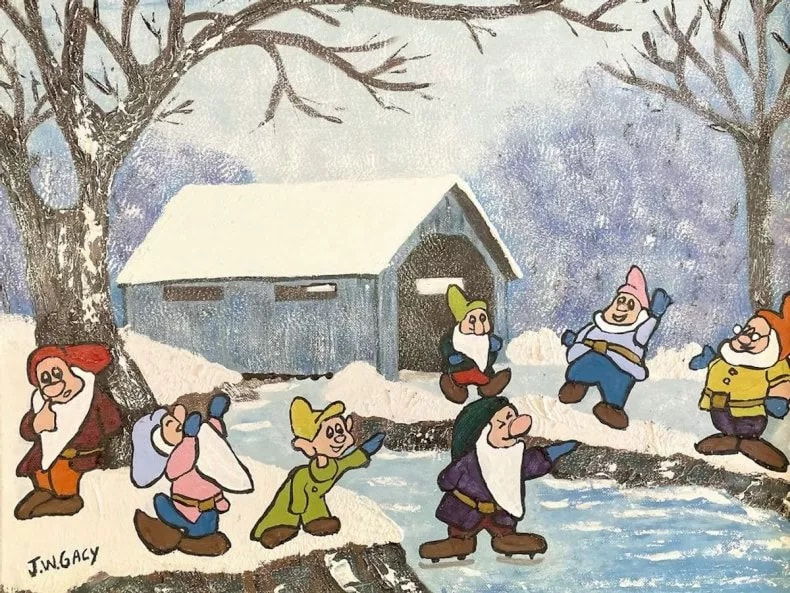
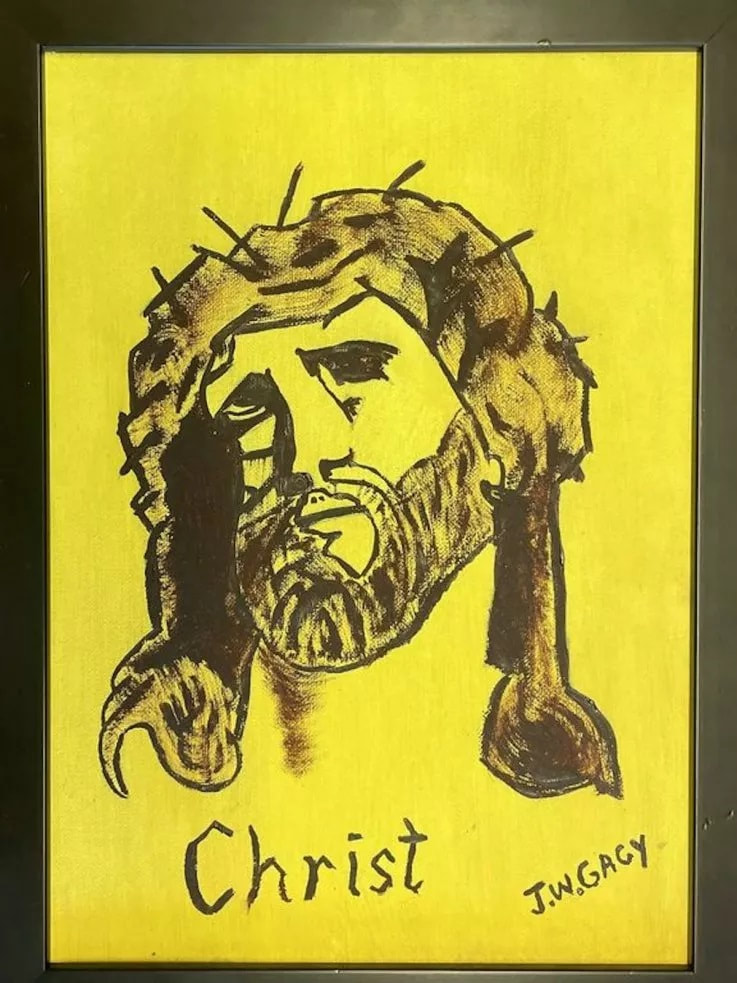
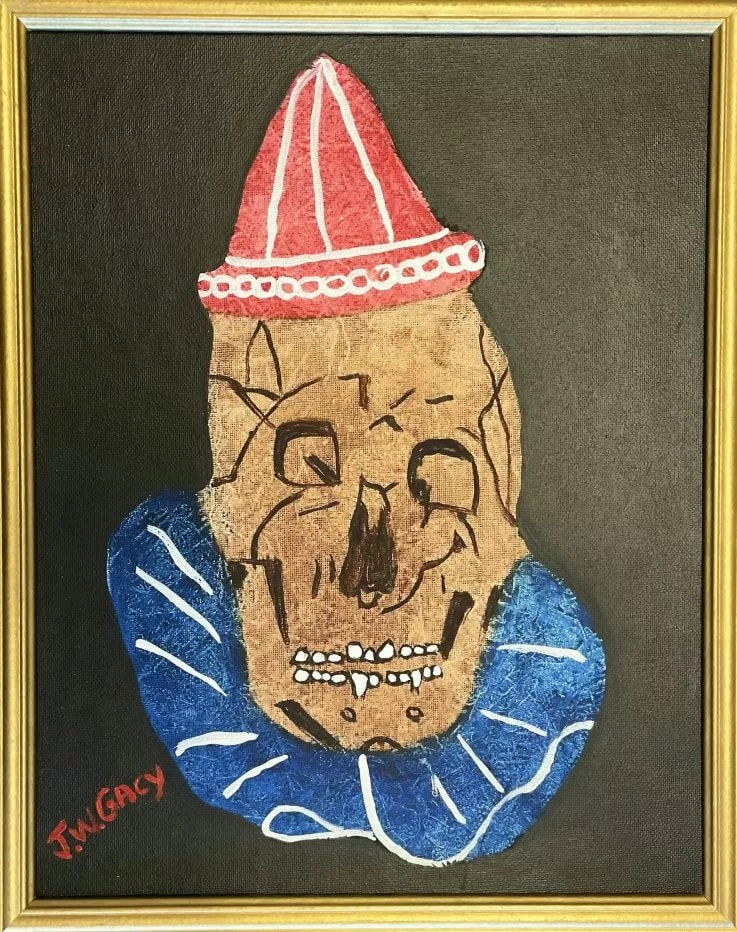
 RSS Feed
RSS Feed








